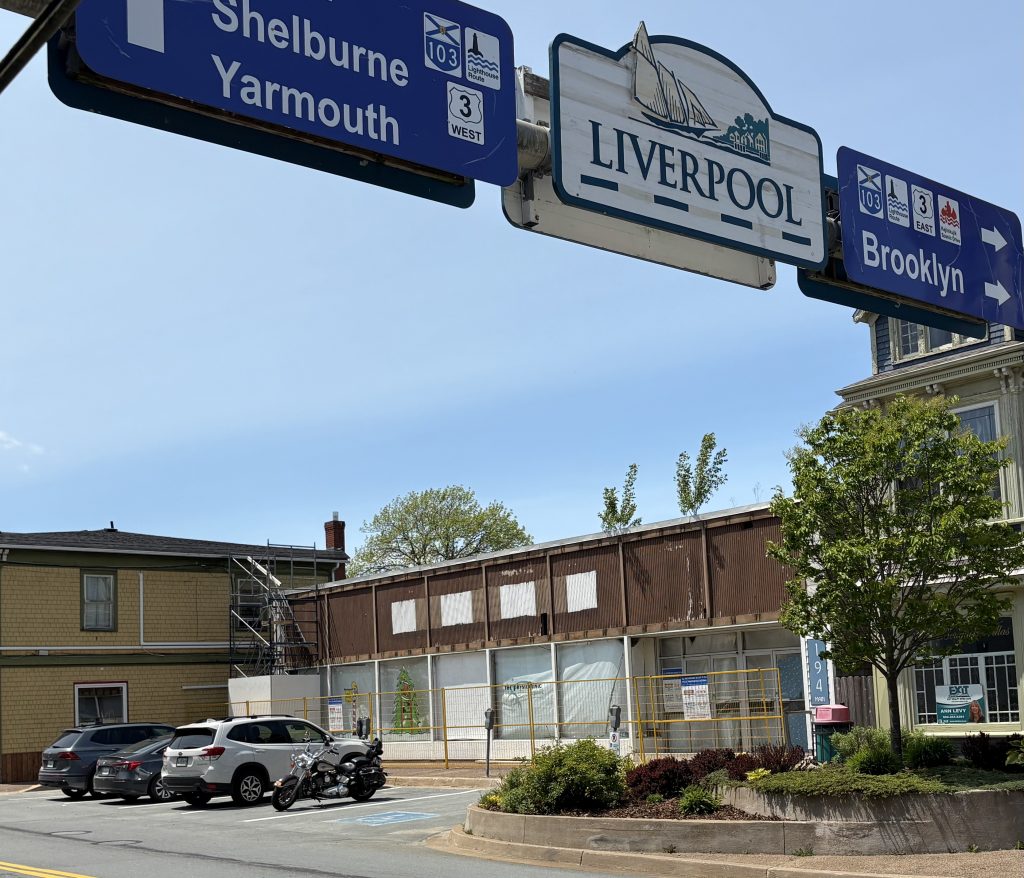Queens councillors OK revised Stedmans building apartment plan

Region of Queens councillors on Tuesday voted on a revised plan to develop 194 Main St. in Liverpool. (Rick Conrad)
Region of Queens council have changed course to allow a developer to build apartments on Main Street in Liverpool after all.
At their regular meeting on Tuesday morning, councillors voted unanimously to start the process to amend the municipality’s land use bylaw.
A public hearing will be held on Nov. 12 at 9 a.m. in council chambers about changing the bylaw to allow more ground floor space to be used for residential uses in the downtown commercial zone.
Currently, no more than half of a building’s ground floor can be used for apartments.
RELATED: READ MORE ABOUT 194 MAIN ST.
Developer Eric Fry approached the region in February to change that rule to allow him to turn all of 194 Main St., commonly known as the old Stedman’s building, into apartments. His original plan was for 16 units, with indoor parking and storage.
In July, councillors rejected changing the bylaw. Fry immediately listed the property for sale.
He returned to the region’s planning advisory committee in August with a new plan that would include two commercial units on the ground floor of the 30,000-square-foot building, in addition to 14 apartments.
His latest proposal is for 18 residential units, four of which would be “hotel suites”, and two Main Street-level commercial units of 300 square feet each. One of those would be a laundromat.
“So given the significant size of the building at 194 Main St., 50 per cent of the ground floor area of the building creates some challenges for the owners of the building,” Director of Land Use Mike MacLeod told councillors.
MacLeod reminded councillors that if the bylaw is changed, it would apply to all property owners in the downtown commercial zone.
“Any proposed amendments would apply not only to the applicant’s property, but would apply to all other owners of property of commercial buildings who want to convert more than 50 per cent of the ground floor area to residential uses.”
Planning advisory committee members originally discussed recommending a minimum depth of 6 metres for commercial space on the ground floor, but settled on 3.66 metres or 12 feet and a minimum floor area of 27.88 square metres or 300 square feet.
The other changes proposed would require that commercial uses extend along the full width of the building facade from its main entrance.
Deputy Mayor Maddie Charlton, who is a member of the committee, said PAC members believe the bylaw needs to be more flexible for property owners in the commercial zone.
“There are buildings of significant sizes that make it really challenging to allow for more residential while protecting the commercial area. And so what this does is it protects the Main Street and surrounding streets in those commercial zones or commercial core zones anywhere.
“We do recognize that there are folks beyond this proposal that have an appetite to decrease the size of commercial space. They could put in more residential space, which we feel like is a win-win.”
Under the proposed amendments, the commercial units could not be used as office space by the building owner or manager.
Mayor Scott Christian said after the meeting that the changes would be good for downtown Liverpool.
“We’re hoping to see that generate more investment, because right now we all know that there’s a lot of vacancy and underutilized spaces in the downtown core and there’s also a lot of space that could be repurposed for residential units, which we know there’s a huge demand for. So we’re hoping that we’ve struck a good balance there.”
Christian said the municipality looked at rules in other areas for guidance on the changes. He pointed to Halifax, which encourages businesses to set up as boutique shops in some buildings.
“Like a fishmonger or a small deli or an ice cream shop or a candy shop or small sort of micro retail models,” he said in an interview. “If property owners take advantage of the opportunity to create really small spaces, that micro retail model, which I think could be attractive to our residents and our visitors.”
Christian said he understands if some people might believe the process has been tailored to suit one developer. But he says it’s an issue the community had to tackle.
“That was certainly the impetus or the catalyst to have the conversation, but I’m quite excited about where we’re going to land. I think that if the amendment goes through, I think it’s a step in the right direction, in getting more flexible in the way that folks can use those buildings in the downtown core to make it more vibrant, breathe more life, bring more people into the downtown core.”
In a survey conducted by Halifax consultants UPLAND Planning in July, 18 of 30 respondents said they were fully or somewhat supportive of changing the bylaw.
But 90 per cent of the business owners who responded were against a bylaw change. They said they were concerned about eroding the commercial area.
Email: rickconradqccr@gmail.com
Listen to the audio version of this story below





















